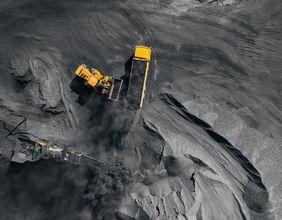Highlights
- Earlier this week, the International Monetary Fund (IMF) released its outlook for global economic recovery.
- The headline forecast for global growth, too, has been brought down by 0.1% to 5.9%.
- The 2022 projections were held the same at 4.9%.
Earlier this week, the International Monetary Fund (IMF) released its outlook for global economic recovery. A clear warning is there on the threats to economic recovery post COVID-19 disturbances. In addition, a marked divergence between the rich and poor countries has been labelled. This revision has been tagged as a modest one, masking the downgrades for some countries. Low income developing nations do not show a reason for a very positive outlook because of the challenges of the pandemic. The headline forecast for global growth, too, has been brought down by 0.1% to 5.9%. However, the 2022 projections were held the same at 4.9%.
Why 0.1% lower?
The revision mainly reflects downgrades in the advanced economies triggered partly due to supply disruptions and the worsening pandemic dynamics in low-income developing nations. The mildness in the downgrade is because of the robust short term prospects of developing economies and few emerging markets for commodity exports.
The short term challenges posed by the variants of the Covid 19 virus have the potential to challenge the medium-term performance too.
What are the challenges on the policy front?
The Delta variant has put doubts on how soon can the world come out of the pandemic or overcome it. The challenges across economies are multidimensional-
- suppressed growth in employment
- increasing inflation
- food insecurity
- adversities in human capital accumulation
- climate change
Despite the recovery in output, employment is projected to lag behind.
Outlook for advanced economies
Triggered mainly by the significant policy support expected in the United States to increase potential, the forecast is one exceeding the projections in the pre-pandemic medium-term period. Supply glitches result from repeated outbreaks and weather-related adversities are causing a shortage of inputs and slower manufacturing in several nations.
Outlook for developing economies
Continued loss of output is in the offing for emerging markets and developing nations. Inadequate policy support and slow vaccine rollouts are being blamed here. The inadequacy is a result of tighter financial positions and a larger risk of de anchoring inflation expectations.
Outlook on inflation
Inflation results from the pandemic induced demand-supply misbalance and higher commodity prices relative to their low base last year. While some pressures are expected to subside in 2022, some economies may still live with the problem due to increased food prices, lagged impact of increased oil prices and exchange rate depreciation making imports costlier. Thus, there is uncertainty about how things will come around on this front with more skewness to the higher side.
What can be done at the national level?
On the fiscal policy front, there must be higher spending on health care. In a situation of increased financial pressures ushered in by the persisting pandemic, stimulus packages could be more targeted towards the worst affected people of the society. At the earliest opportunity, measures to secure recovery must be out in place, and there should be significant investment in long term structural goals. Debt sustainability, too, should be pursued.
On the monetary policy front, central banks need not necessarily give transitory inflationary pressures too much attention. Also, tightening may be avoided without further clarity on the underlying price dynamics. Policymakers must be ready to act quickly depending on the need of the hour.
Climate change- a concern
The outlook document suggests the need for solid commitments at the upcoming United Nations Climate Change Conference (COP26). Policy strategies must be put in place for-
- international carbon price floor (based on country-specific situations)
- green public investment
- research subsidy increase
- targeted transfers towards households to help in the energy transition
In addition, advanced economies, as promised, must, annually, mobilise a hundred billion dollars of climate financing for developing nations.
What can be done to speed up vaccinations?
Vaccination and prevention of virus mutations are on the top of the list for economies across the globe. For this purpose, Group of Seven and Group of Twenty countries need to fulfil their pledges for dose donation, get manufacturers to deliver on priority to COVAX and cut down or remove trade restrictions for the movement of vaccines and allied inputs. In addition, there is also a need to close the $20 billion gap in grants for funding testing, therapeutics and genomic surveillance to save more lives and keep vaccines fit to this need.
Bottom Line
Repeated outbreaks are a cause of concern and are putting economies across the globe into a lot of uncertainty. The latest update of the Brookings-Financial Times Tracking Indexes for the Global Economic Recovery (TIGER) shows growth slowing momentum across economies, particularly in the U.S. and China, which are considered the growth engines.
Monetary and fiscal policy decisions too become difficult for nations due to the uncertain nature of the outbreaks. In addition, is the glaring concern on climate change. Overall any sign of stability and certainty will kick in only once the vaccination problem is managed, and no further mutations happen. The IMF chief economist, Gita Gopinath, has emphasised the urgency on the matter and spoken about the priority to vaccinate 40% of each country's population by the end of 2021 and scale up the number to 70% by the mid of 2022.






